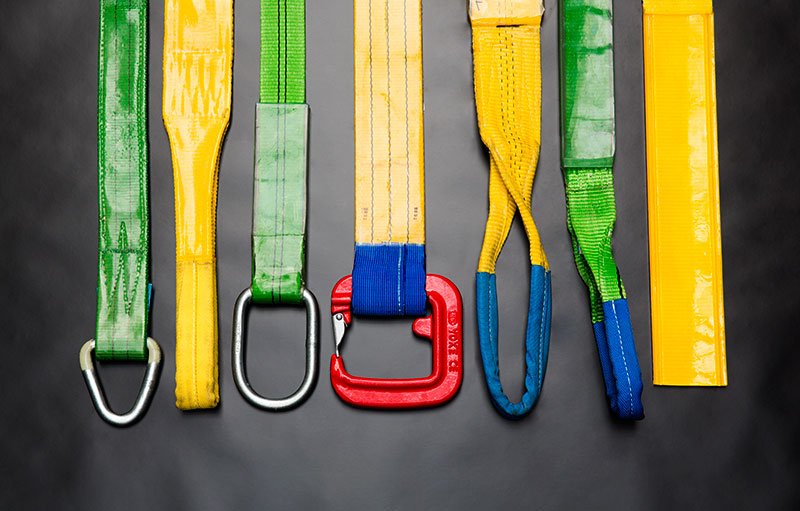PU-Coatings
- Extended possibilities of use for webbing lifting slings
- Protection of the webbing from mechanical and chemical damage
- Extension of service life
- Quality control of material feasible due to transparency of webbing
- Highest level of workplace safety, since coating cannot be removed
Download
STOBITEX - PU Coatings are applied directly to the lifting belts. The material and properties are the same as those of the STOBITEX - PU Protection Sleeves.
In this way the highest levels of protection are afforded during the lifting process. The coating can be applied to all belt widths up to 300mm. Coatings can be single as well as double sided. In order to offer the required protection against cuts, the coating thickness should not be less than 5mm. An advantage of the permanent nature of the coating is that the belt cannot be used unprotected. The material is the same PU Elastomer that is also used in the protection sleeves.
There is the additional possibility of protecting the vulnerable lifting eye and hook areas. Coating the lifting eye areas up to the reinforced webbing is also possible with loop belts. The hooks can be treated in various ways:
Loop Coating: the loop is protected by a thin PU coating. (The loop remains fully flexible).
Stiff loop coating: similar to loop coating, but loop can no longer be moved (important if the belt is to be pushed under pressure).
The following should be noted:
- Due to the permanent nature of the coating, there is no movement of the belt within the coating, as is the case with the protective sheaths. As a result cargo can slip during the lashing operation as it can get snagged in the PU and move in an unplanned direction. This eventuality incurs high force levels and as a result particular care should be taken when loading cargo in this way.
- Where webbing materials have been thickly impregnated the PU coating can become separated from the material. This could occur when the polyester belt is stretched. The different behaviour of PU and webbing when stretched can lead to partial separation in rare cases.
Assistance can be given by white lifting belts that are attached but not impregnated. Needless to say, a belt impregnated on both sides offers excellent protection against moisture. Additionally, PU has a good anti-slip property (e.g. transporting smooth pipes). It is possible to increase this slippage reduction for particular uses by either introducing rubber or wood shavings into the material, roughening the material surface, or by using foam as a material surface.

| Belt width b | Weight per msingle-sided | Weight per mdouble-sided | Minimum layer thickness PU |
| up to 30 mm | 0,25 Kg* | 0,70 Kg | 5 mm |
| up to 40 mm | 0,35 Kg* | 0,90 Kg | 5 mm |
| up to 60 mm | 0,85 Kg | 1,20 Kg | 5 mm |
| up to 80 mm | 1,00 Kg | 1,50 Kg | 5 mm |
| up to 100 mm | 1,25 Kg | 1,70 Kg | 5 mm |
| up to 120 mm | 1,40 Kg | 2,10 Kg | 5 mm |
| up to 160 mm | 1,85 Kg | 2,80 Kg | 5 mm |
| up to 180 mm | 2,00 Kg | 3,60 Kg | 5 mm |
| up to 240 mm | 2,80 Kg | 5,30 Kg | 5 mm |
| up to 300 mm | 4,40 Kg | 6,80 Kg | 5 mm |
*= Coating without side and back bead
All dimensions and weights are approximate! Technical changes reserved.
- Polyurethane Elastomer approx. 80 Shore A, elongation at break 450% (DIN 53 504).
- Additional tear resistance 20 N/mm (DIN 53 515), abrasion 60 mg (DIN 53 516).
- Composition: PU Elastomer permanently bonded to webbing lifting belts or steel ropes.
Note: Whilst a certain protection against abrasion is achieved with thin coatings, resistance to cutting rises with the PU coating thickness. A good resistance to cuts is achieved with a minimum coating thickness of 5mm.




